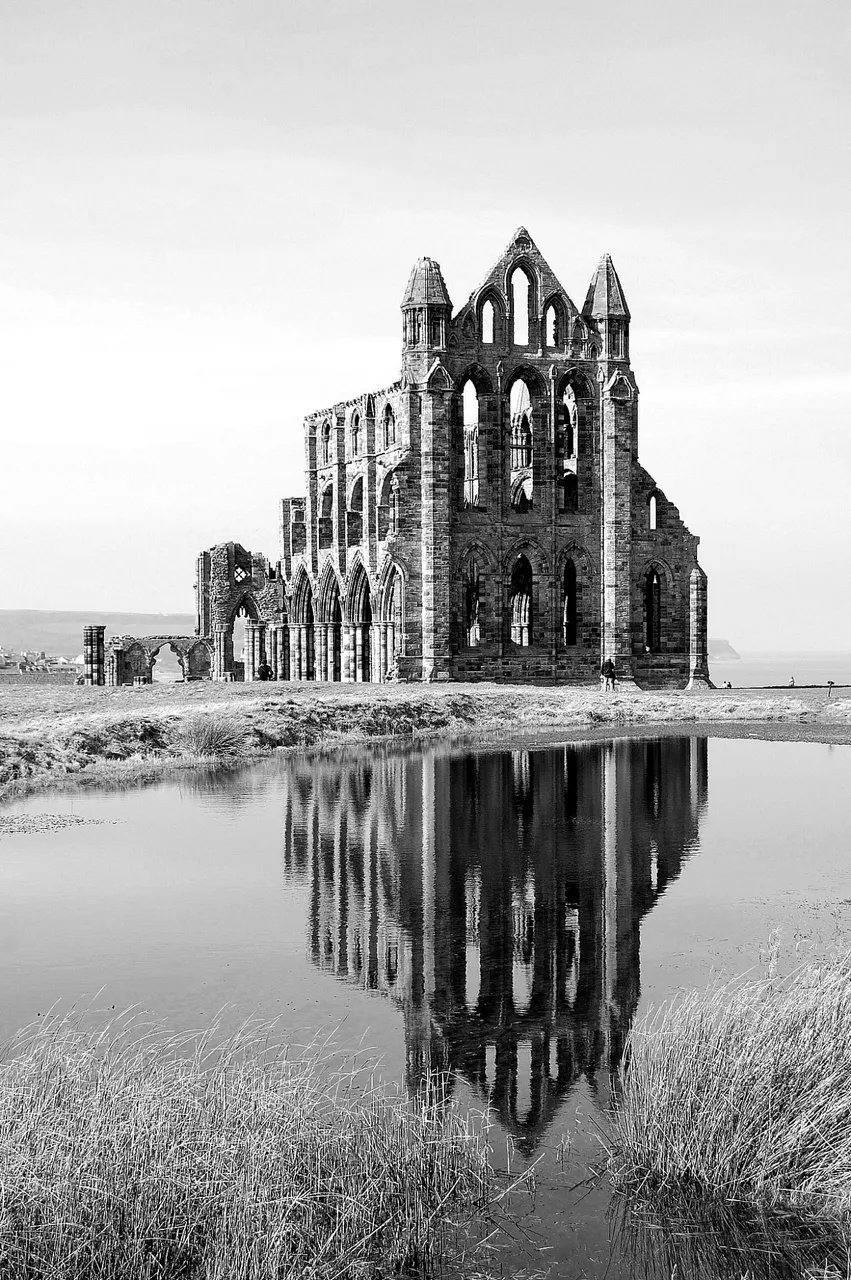The first monastery was founded in 657 AD by the Anglo-Saxon era King of Northumbria, Oswy (Oswiu) as Streoneshalh (the older name for Whitby). He appointed Lady Hilda, abbess of Hartlepool Abbey and grand-niece of Edwin, the first Christian king of Northumbria, as founding abbess. The name Streoneshalh is thought to signify Fort Bay or Tower Bay, in reference to a supposed Roman settlement that previously existed on the site. This contention has never been proven and alternative theories have been proposed, such as the name meaning Streona's settlement. Some believe that the name referred to Eadric Streona, but this is highly unlikely for chronological reasons. Streona died in 1017 so the naming of Streoneshalh would have preceded his birth by several hundred years.
The double monastery of Celtic monks and nuns was home (614–680) to the great Northumbrian poet Cædmon.
In 664 the Synod of Whitby took place at the monastery to resolve the question of whether the Northumbrian church would adopt and follow Celtic Christian traditions or adopt Roman practice, including the manner of calculating the date of Easter and form of the monastic tonsure. The decision, with the support of King Oswy, was for adopting Roman practices and the date of Easter was set.
Streoneshalch monastery was laid waste by Danes in successive raids between 867 and 870 under Ingwar and Ubba and remained desolate for more than 200 years. A locality named 'Prestebi' was recorded in the Domesday Survey, which may be a sign that religious life was revived in some form after the Danish raids. In Old Norse, this name means a habitation of priests. The old monastery given to Reinfrid comprised about 40 ruined monasteria vel oratoria, similar to Irish monastic ruins with numerous chapels and cells.
